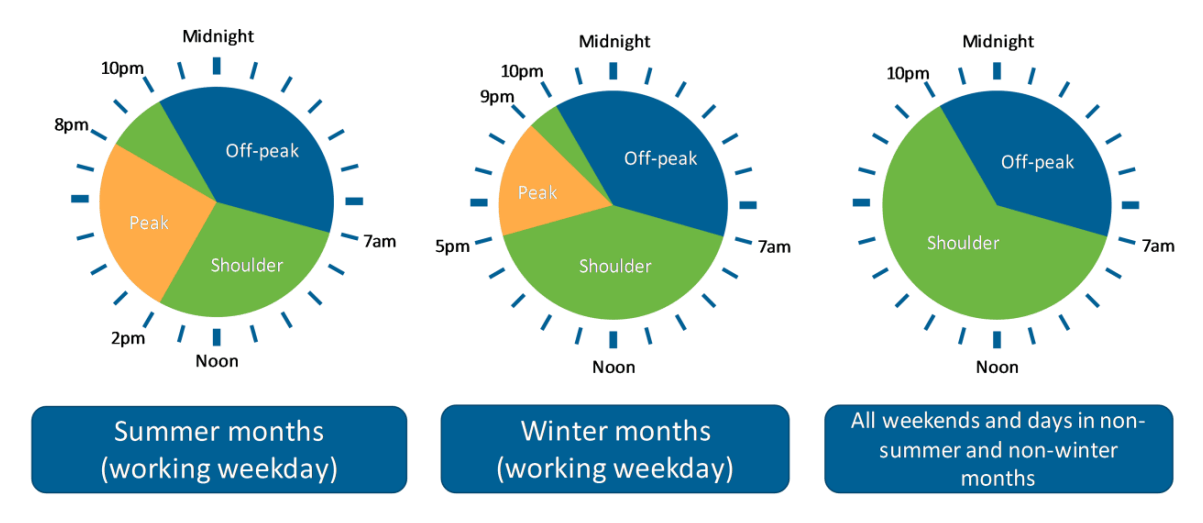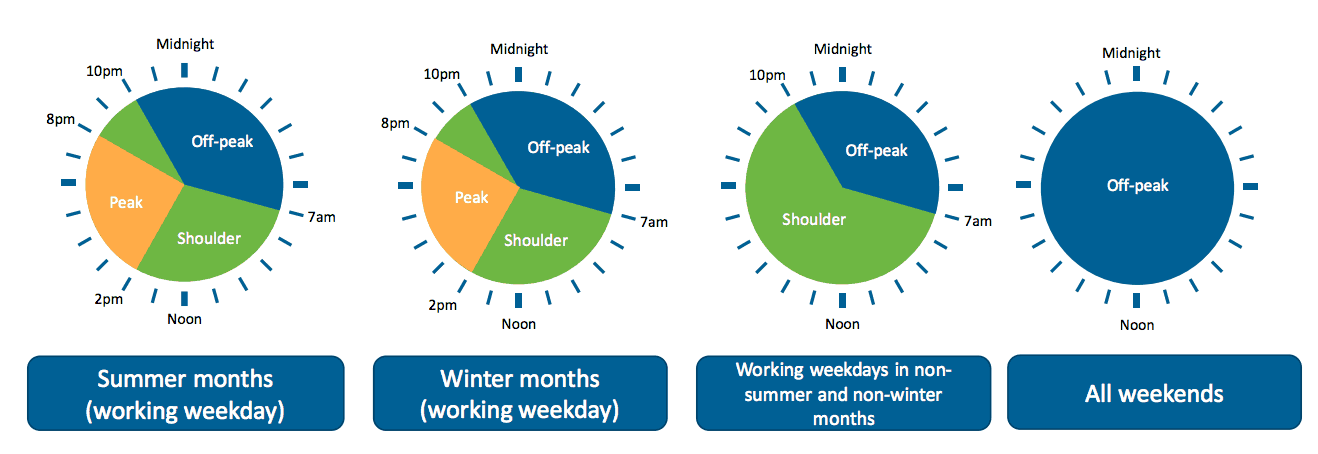From 1 July 2018, Ausgrid have moved to seasonal Time Of Use periods. If you have a home or small businesses in Northern or Eastern Sydney, the Central Coast or parts of the Hunter region you’ll soon experience a change to your ‘peak periods’. This is designed to reflect the actual hours of high demand on the network.
The good news is, if you are able to shift your energy use, then there are potential savings to be had.Ausgrid seasonal Time of Use periods
- For April, May, September and October the weekday peak period will be removed and Shoulder rates will apply from 7am-10pm for those months with 10pm-7am covered by off-peak rates.
- For November to March the peak hours will remain the same i.e. 2-8pm weekdays excluding public holidays.
- For June to August the peak hours will be changed for households to 5-9pm weekdays excluding public holidays.
Ausgrid Residential Time of Use Periods from July 1, 2018

Ausgrid Small Business Time of Use Periods from July 1, 2018

So what does this mean?
Any reduction in Ausgrid’s peak hours is welcome as their network rates of ~25c kWh is close to the highest peak network usage charge in Australia. The previous peak hours were not reflective of high network utilisation in Autumn and Spring. Other ‘peak periods’ covered times when the network wasn’t experiencing high demand.
The change for residential winter peak rates is a plus for solar owners on time of use as they have a greater window up until 5pm to pre-heat their houses in winter before they come home from work/school etc.
As a PV system owner and active loadshifter, I think this is a positive change as it gives engaged consumers a greater ability to shift loads to lower cost time periods. For those who make a little effort (and technology can help) then the reward can be lower bills as a result. Unfortunately, it comes at the cost of more complexity for retailer billing systems, comparison services (like ours) and the bills households and small business receive.
Given the national push to cost-reflective network tariffs, expect the trend for more complex tariffs to increase for both Time of Use and Demand tariffs. Gone are the days when consumers could care less about when they use electricity. The only way to do that these days is to get a big solar system and some storage (and get an expert to program it around the mix of cheap solar and off-peak electricity while avoiding peak periods).

